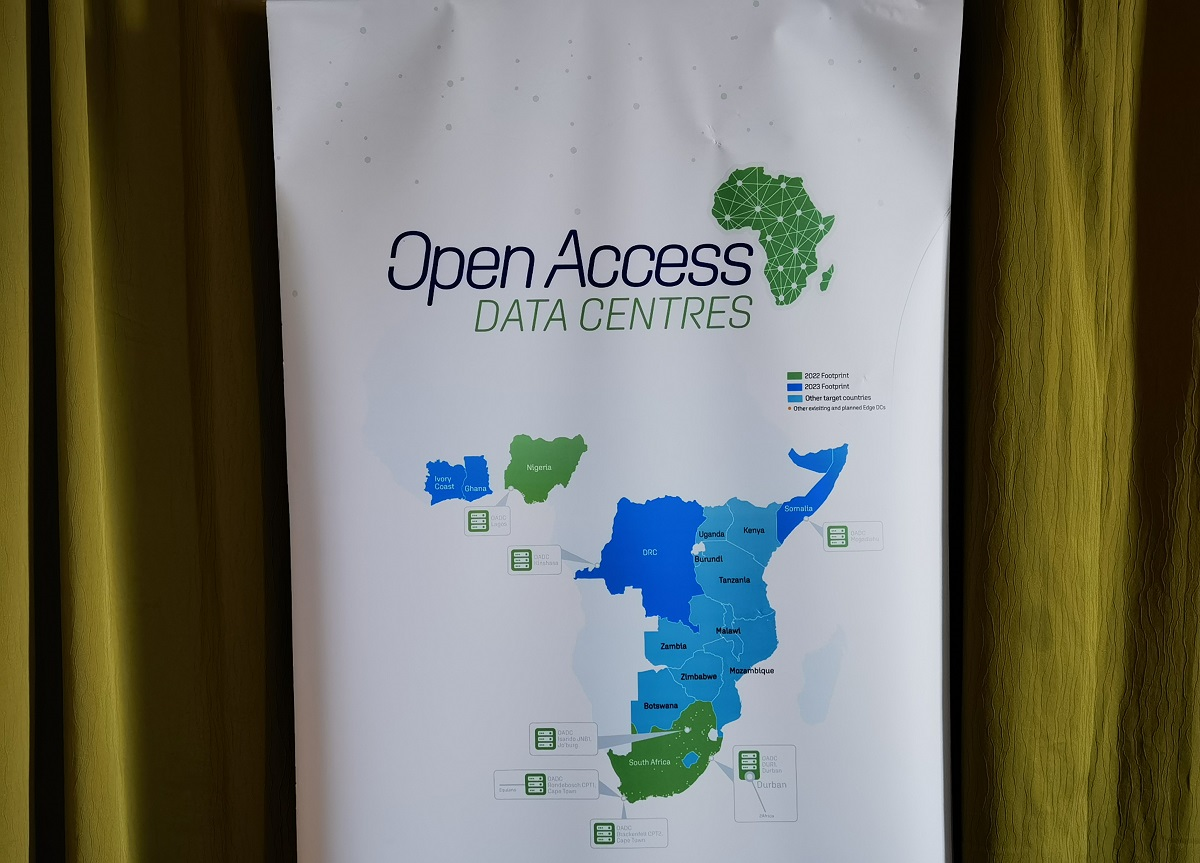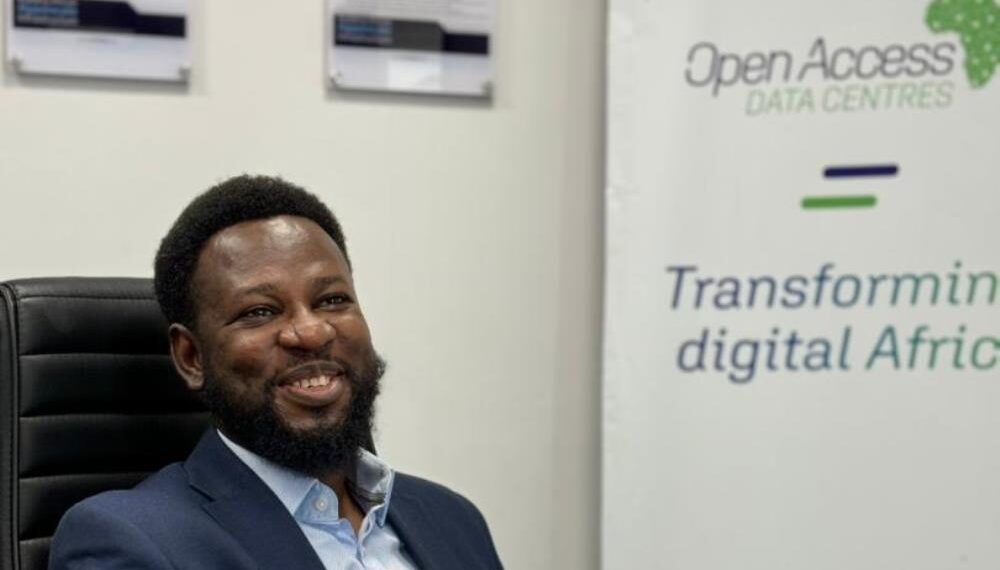A sustainable data center is one that minimizes its environmental impact while still providing reliable data processing and storage services.
In this interview with Techeconomy, Olatunji Aduloju, the operations manager, Open Access Data Centres (OADC) speaks about sustainability in data centre operations.
He aligns with the school thought that ‘By reducing the environmental footprint of data centres, countries can lower emissions and meet sustainability goals’.
How concerned is WIOCC & Open Access Data Centres about sustainability especially when it involves the environment more especially when it comes to Data Centres operations?

WIOCC and OADC recognise that sustainability is a paramount consideration in the development and operation of data centres.
With increasing energy consumption and carbon emissions associated with digital infrastructure, we are committed to operating sustainably.
We apply competitive sustainability standards during the design, building and operation of our data centres.
This ensures that our facilities are both hyperscale-ready for clients, and meet global investor requirements for managing environmental and social risks.
What does sustainability mean to WIOCC and OADC and how driven is the company on sustainability and the environment?

Sustainability encompasses a variety of obligations that are inherent in conducting business responsibly.
For WIOCC and OADC, this includes:
Leadership within the ICT industry, regional bodies and active engagement in industry organisations and events.
For example, the CEO of OADC serves as Chairman of the Africa Data Centres Association and is a member of the Science and Technology Committee of the Lagos Chamber of Business and Industry.
OADC also participates in the Infrastructure Masons Climate Accord which demonstrates our commitment to global initiatives focused on carbon accounting and reduction.
Secondly, corporate social responsibility initiatives through which we make a positive impact on the communities amongst whom we operate.
For example, OADC has served as a strategic partner for the STEAM UP programme in Lagos for three consecutive years. This mentorship program aims to inspire, motivate, and guide young girls in pursuing studies and careers in the fields of Science, Technology, Engineering and Mathematics, by connecting aspiring female scientists in secondary schools with professional women working in STEM fields.
Thirdly, a comprehensive sustainability strategy across the entire WIOCC Group, and robust systems and processes to effectively manage environmental and social risks across our operations.
In practice, this includes initiatives such as using acoustic panels in our power farm to stop reverberations and high levels of noise.
Data Centres consume a lot of power to drive its operations, with the attendant effect on climate change and greenhouse gas emissions -such usage of power will increase with Artificial Intelligence-how sustainable should Data Centres be when it comes to usage of power?
Energy efficiency is an area of focus for OADC. We have set performance targets that require us to improve our Power Usage Effectiveness (PUE) which is the industry standard for measuring energy efficiency.
In addition, green building design has been incorporated as a requirement of our core data centres. This requires energy and water efficiency to be included in the design of our data centres.
A key metric in building design is the ‘embodied carbon’ of materials – this refers to the greenhouse gas emissions associated with various stages in the life cycle of building materials, including raw material extraction, manufacturing, transportation, construction, and disposal. Current international building certifications, like IFC EDGE and LEED, require us to achieve ambitious targets relating to the embodied carbon in the materials we use for data centre construction.
How can technology help data centres to maximise sustainability process especially with energy efficiency and what lessons can be learned on the energy efficiency of OADC operations?
At OADC operations, we focus on improving our energy efficiency through technology and optimal occupation of our data centres.
This includes:
- Implementing advanced and more efficient cooling systems and managing airflow efficiently
- Integrating renewable energy sources
- Investing in energy-efficient hardware
- Implementing smart energy monitoring and reporting systems to identify improvements and eliminate waste.
- Using smart technologies like artificial intelligence to forecast workload and optimise resource allocation.
Waste management is always an environmental issue especially in a developing country, how can industrial waste be managed taking Open Access Data Centre as a case study?
At OADC, we apply the waste hierarchy which requires us to reduce and minimise waste as the first option.
Where waste generation cannot be avoided or reduced, we recover and reuse waste in a manner that is safe for human health and the environment.
Where waste cannot be recovered or reused, we will treat, destroy, or dispose of it in an environmentally sound manner that includes the appropriate control of emissions and residues resulting from the handling and processing of the waste material.
Our policy also requires us to use licensed disposal sites that are being operated to acceptable standards.
We have a Waste Management Plan that emphasizes a “Cradle to Grave” approach. This means we take responsibility for waste from its creation (“cradle”) to its final disposal (“grave”). We ensure waste separation by providing clearly labeled bins for different materials and have partnered with a government-approved waste collection service provider to ensure proper disposal.
Carbon footprints and circularity are issues in the operations of data centres, how do you recycle and manage your waste? is the community involved in your recycling process and in your waste management?
For circularity to be effective and sustainable, we start considering materials usage from the design phase.
We also leverage innovative technologies and sustainable materials to minimise energy consumption, water usage, and waste generation throughout a facility’s lifecycle:
First, in our Lagos data centre, we have partnered with RESWAYE (Recycling Scheme for Women and Youth Empowerment), which collects our plastic waste for recycling purposes.
Secondly, as part of our environmental initiatives, we dispose of electronic waste responsibly. Whenever possible, we ensure that equipment or its components are recycled or reused.
Thirdly, our water treatment plants are environmentally beneficial. The implementation of Reverse Osmosis and Sequence Batch Reactor technology in our plants not only provides clean and safe processed water but also helps save water and reduce waste released into the environment. Its impact is far-reaching, contributing significantly to the protection of public health and the environment.
Additionally, we utilize environmentally friendly, clean agent fire suppression systems in our facilities. These agents have extremely low global warming potential and zero ozone depletion potential, containing no carbon dioxide or other harmful gases.
Nigeria is not focussed yet on using renewables when it comes to powering data centres, is OADC looking to do this?
Yes, certainly. OADC has recently completed a feasibility study regarding using renewable energy in our data centres. We have already launched a pilot project using solar power at one of our South African data centres, and we plan to roll out further solar installations wherever we operate in Nigeria and the rest of Africa.
We are also investigating other forms of renewable energy for future projects, including wind and wave energy.
Nice speaking to you!
Thanks for having me:






